Wondering about termite tenting, what it costs, or whether it’s worth it? Don’t worry, we’ve built a guide to help you answer all of these questions and more.
Termite colonies can invade and destroy a home at an alarming pace. In the United States, drywood termites are often the culprit, and they’re notoriously tricky to get rid of.
Professional pest control companies can treat these unwanted intruders in a variety of ways, but perhaps the most effective method is termite tenting.
We partnered with Networx to help you find local pest control techs. Click to below to get a FREE quote.
What Is Termite Tenting?
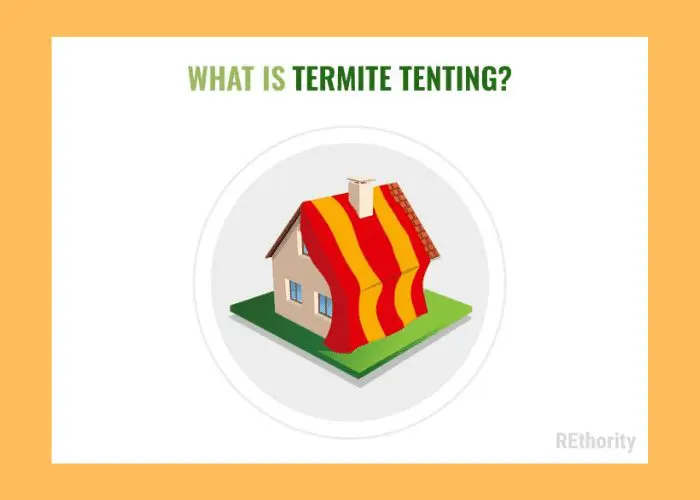
Termite tenting is a pest control treatment process that can get rid of an infestation by pumping poison gas (fumigant) into a home that is covered by a large tent.
The tent keeps the poison gas inside the home, and it helps it penetrate deep into every part of the home, even the wood timbers.
Tenting is extremely effective in getting rid of a stubborn termite infestation or one that is difficult to access. Still, it is costly, involves some risk, and requires a lot of planning and preparation on the part of the homeowner.
If you’re considering asking a pest control company to tent your home, you probably have questions.
What should you do ahead of time? How much will it cost? Will it kill other types of pests?
How long do you have to wait before you can enter your home again? Is it actually safe? In this guide, we explore those questions.
We also discuss more about termite tenting, average costs, risks to know about, frequently asked questions, and more. First, let’s look at the difference between termite tenting and fumigation.
Termite Tenting vs. Fumigation
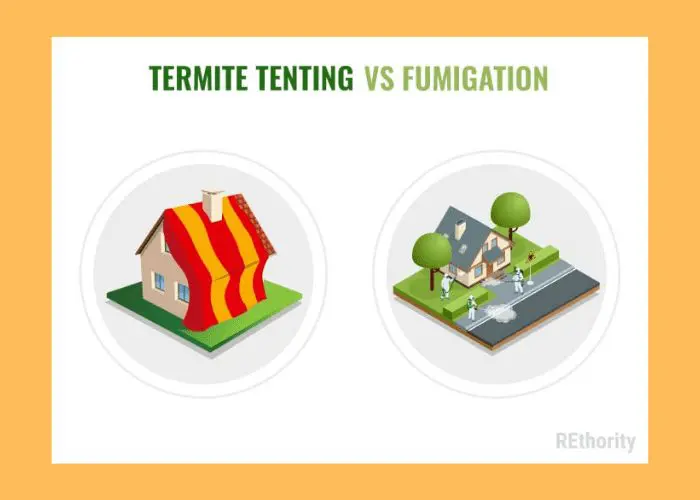
Many pest control companies use the words termite tenting and fumigation interchangeably, but there is an important difference. Termite tenting is a broader term that can be done to allow either fumigation or heat treatment of termites.
With the most common type of termite tenting, fumigation, poisonous gas is pumped into the tented home to penetrate every nook and cranny and take care of the infestation. The home must be thoroughly ventilated afterward.
Heat treatment also involves tenting, but instead of gas, hot air is forced into the home to heat the wood structures to at least 135 degrees Fahrenheit, which kills the colony. This form of tenting does not require ventilation.
Heat treatment is a much less common termite treatment, so we’ll focus on fumigation in this guide.
How Termite Tenting Works
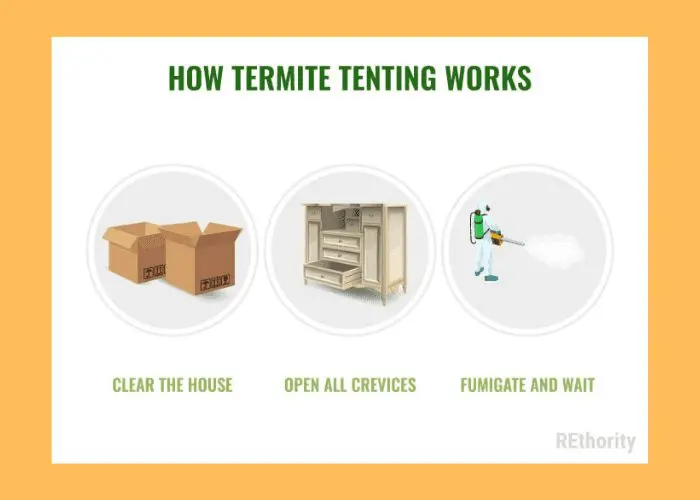
First, you call a pest control company to order a termite inspection. Then, they determine it’s a large, widespread infestation. The likely recommendation is termite tenting for fumigation.
Clear the House
Smaller colonies that are localized can be treated with less drastic measures that won’t require tenting. Everyone that lives in the home (including plants and pets) must leave for about three days to allow for the termite tenting process to finish.
Anything in the home that you will later ingest, including medicines and food, should be removed or double bagged with Nyoflume bags (your pest control company will provide you with plenty of these).
These bags have a special seal and do not allow the poisonous fumigant to penetrate. This keeps your food and drugs safe during tenting.
Open All Crevices
Before leaving the home, your licensed pest control specialist will ask you to make sure all doors (cabinets included) and drawers are open within the home to allow the gas to penetrate fully.
The pest control specialist makes sure the home entrances are locked to ensure no one can accidentally enter. They will enclose the entire home in a nylon tent (though some fumigation is tentless and involves just sealing all doorways and windows to the home).
Once the nylon tent is up, they will place warning signs around the perimeter. The pest control specialist will then pump the fumigant (usually Vikane) into the fully enclosed, sealed-off home.
Fumigate and Wait
Depending on the extent of the infestation, the size of the home, and the weather conditions, this could take anywhere from 6 hours to a full week. Typically, the actual fumigation period is short, taking 24 hours or less.
Once the fumigation is complete, your pest control specialist will open up the seals and begin using a ventilation system to air out the house and make it safe for re-entry.
Ventilation takes several hours, and your pest control specialist will test the air to ensure you and your family don’t re-enter until the amount of fumigant in your home’s air has reached 1 part per million (ppm) or less.
What Happens After Termite Tenting?
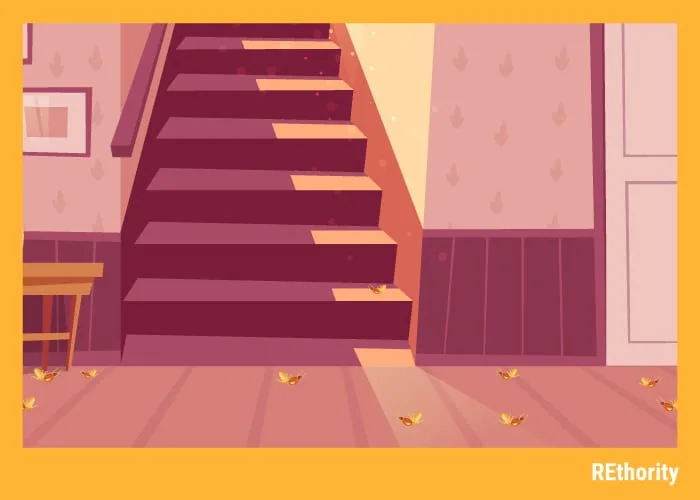
There may be a few termites left from the colony as long as one week after the fumigation, but they won’t survive much longer than that due to the poisonous gas.
You may even see a few newly hatched termites because the fumigant will not kill termite eggs. However, without the rest of the colony, the baby termites will die within a few days.
The entire colony should die off within one week from your fumigation date. In addition to a few leftover termites, you may see an increase in the number of other pests (like ants and roaches) that make their way into your home.
Results Are Evaluated
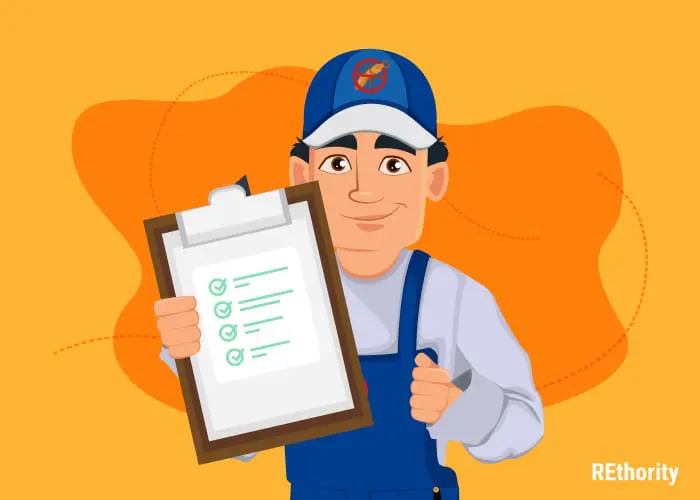
They will show up to eat the dead termites. If this happens, contact your pest control company to set up a whole home pest control program. The gas fumigant used to treat your home will not leave any residue on your belongings or in your home.
But because the gas used in termite tenting and fumigation is poisonous, some people have reported symptoms after re-entering their home. This shouldn’t happen if the home was properly ventilated and air tested.
Symptoms of exposure to the fumigant include nausea, dizziness, headaches, and lung or eye irritation. If you experience symptoms like these after fumigation, see your doctor immediately and let the pest control company know. They may need to ventilate the house further.
Termite Tenting Cost
The cost of termite tenting varies based on a few factors, like your location, the length of the fumigation process, and the size of your home. Overall, some cost averages help plan a fumigation to see if it fits into your budget.
According to averages from around the web, you can expect termite tenting to cost between $1,000 and $2,500. This means you’ll pay about $10 to $20 per linear foot.
The cost of termite tenting may seem high. But compared to the cost of repairing the structural damage a large colony of drywood termites can do in very little time, the expense is much lower
We partnered with Networx to help you find local pest control techs. Click to below to get a FREE quote.
Tips From the Pros
What better way to learn about a topic than to hear advice directly from a pro? We’ve rounded up a few water damage repair pros to help you understand what you’re dealing with.
Anything organic will be affected by the chemicals released during the fogging, so you need to remove these beforehand.
Another important point is to remove all kinds of food and perishable products, as well as plants and pets.
To make the termite tenting process easier for the pest controllers, you can also trim back any trees and shrubbery touching the windows and exterior walls, because termites use those as a bridge to your house, and it will make the tenting more difficult.
Termite Tenting FAQ
Here are some of the most frequently asked questions about termite tenting and fumigation.
Will termite tenting kill all termites in and around my home?
Termite tenting will kill all drywood termites which live in and eat wood, but it won’t kill subterranean termites (soil-dwelling termites).
Your pest control specialist will be able to identify which type of termites you’re dealing with upon inspection.
Does termite tenting kill other pests?
Termite tenting may kill some other pests, but it is not an accepted treatment for pests like roaches, spiders, and ants.
Your pest control specialist will recommend the best course of treatment if you’re dealing with more than one type of pest.
How long do I have to wait before re-entering my home after tenting?
The average wait is 3 to 5 days after fumigation. This gives the home enough time to air out and reduces the amount of gas left in the air to less than one part per million.
It also gives the gas enough time to kill off most of the termite colony. There may still be a few living termites when you come back, but they will be dead within a few days.
Will termite tenting kill termite eggs?
Not directly. The most common fumigant used in termite tenting is Vikane, which is not an ovicide (it does not kill eggs).
While it won’t kill eggs directly, it does kill the newly hatched termites that may continue to hatch a few days after fumigation.
Without the support of the worker termites in the colony, the newly hatched termites will die.
Should I cover my mattresses and furniture with plastic during tenting?
It may seem counterintuitive, but you should avoid covering any of your furniture with plastic before tenting.
Plastic in the home slows the ventilation process and results in you being unable to re-enter your home for a longer time.
If I see termite droppings after tenting, does this indicate reinfestation?
Not necessarily. Even after fumigation, the tunnels that termites create as they eat through wood will be filled with droppings.
Regular movement in the home can jostle these droppings out of the termite tunnels and make them visible. However, the tunnels created by the exterminated colony still exist after fumigation.
So it’s possible a second colony could move in and re-infest your home. Call your pest control company for an inspection if you suspect you have another infestation.
Will termite tenting kill the plants directly outside my home?
The gas used in fumigation is poisonous, so if you have plants that are within 18 inches from your home (where the tent will extend to), you should move them or prune them.
In addition, watering the plants and grass within the 18-inch perimeter around your home with plenty of water will help your lawn and plants stay healthy and better recover from the fumigation.
It will also prevent leakage at the bottom of the tent.
Is termite tenting safe?
Termite tenting is very safe when completed under the proper circumstances, but it is not without risk.
If you use natural gas in your home, you should have them temporarily shut off your gas during the fumigation because some fumigants are flammable.
If the home is not properly ventilatedr, you could experience symptoms like nausea, dizziness, headaches, and eye or lung irritation.
Make sure to follow the instructions given by your pest control company and never enter the home during tenting for any reason.
Should You Use Termite Tenting?
Termite tenting is one of the most effective ways to get rid of unwanted pests, but it’s not the best solution for everyone. If you are allergic to pesticide or have limited time to spend away from the home, seek other options.
Conversely, if you can comply with the stringent requirements that come along with termite tenting, it may be the most effective way to treat your home. Connect with a local pest control expert using our form to find out more.
Resources:


